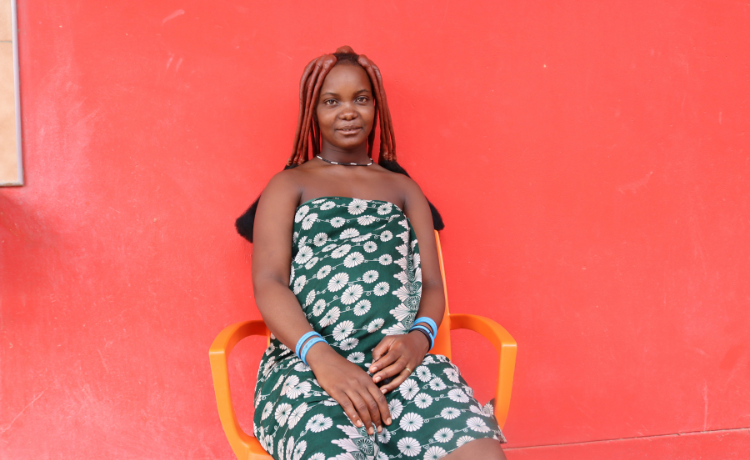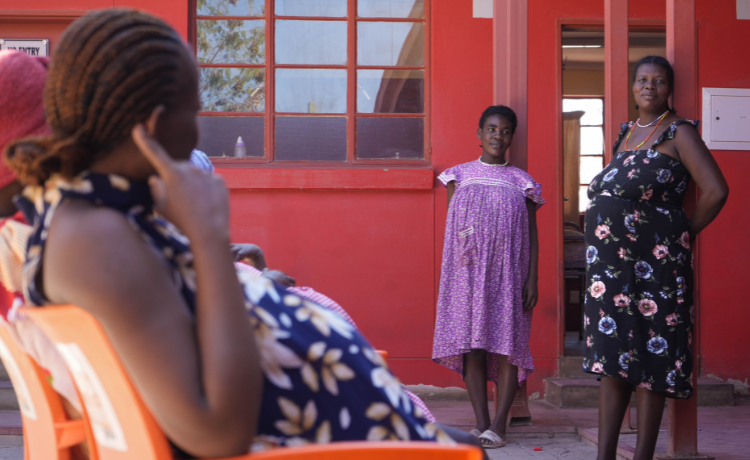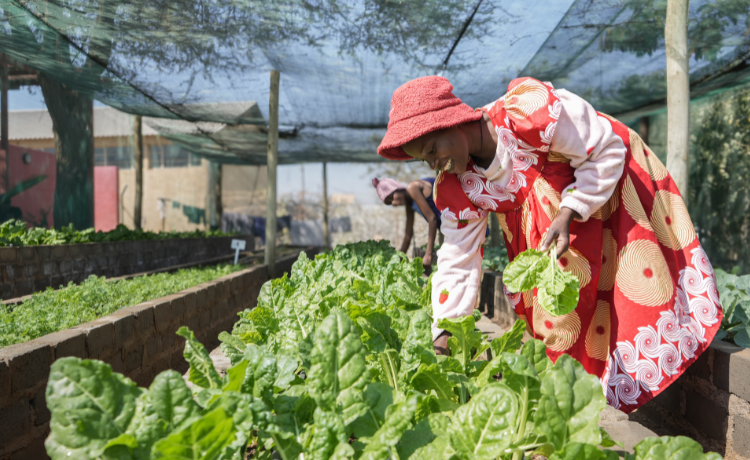News
The waiting game: How a maternity home in Namibia is offering women and newborns a better chance at surviving – and thriving
- 27 May 2025
News
KUNENE REGION, Namibia – Kuliua Maundu, 26, remembers the night seven years ago like it was yesterday. “I was at home when the pain started,” she said. “I thought it was just labour, so I tried to sleep, thinking I'd go to the hospital in the morning.”
But by the time she got there the next day, it was too late. Her baby had died from umbilical cord strangulation, a tragic complication that with the care of a skilled midwife could have been averted.
“I regret it every day”
“If only I had gone to the hospital sooner,” Ms. Maundu told UNFPA, the United Nations sexual and reproductive health agency. “Or if I had been at the maternity waiting home; but we don’t have a car, and it's hard to find someone to take you quickly.”
She lives in the remote village of Orotjitombo, which lies around 30km from Opuwo, the capital of Namibia’s northeastern Kunene region. Long distances, poor roads and a chronic lack of transport have led to extremely low rates of women delivering in hospital, putting many lives at risk.
This was Ms. Maundu’s first pregnancy, and no one had advised her on the importance of antenatal check-ups, which would have helped her understand the advantages of being seen by health professionals. “I regret it every day,” she said.
Finding safety and support
Today, with two daughters of three and five years old, Ms. Maundu is expecting her third baby. But now she’s staying at the Kazetjitindire Angelika Muharukhua maternity waiting home in Opuwo. “Here, I feel safe. If anything happens, I’m close to the hospital.”

The rate of maternal deaths in Namibia has slowly improved over the past few years, but is still almost double the Sustainable Development Goal (SDG) target of no more than 70 deaths per 100,000 live births by 2030.
The maternity waiting home was built by the World Health Organization in 2013 with funding from the European Union, and supported by UNFPA to provide a place for expectant mothers to stay near the Opuwo District Hospital. Skilled midwives are on hand to offer care and advice, and with a shared kitchen, dining room and sleeping quarters, the space can accommodate up to 40 women.
“It's comfortable,” Ms. Maundu said. “At home, we cook outside on the fire – here we have stoves. We sleep on beds, not on the floor. It makes a big difference.”
The waiting home was refurbished through funding from the Government of Japan in 2023, and a collaboration with the World Food Programme also helped to set up a vegetable garden. As well as providing nutritious food, the garden helps the women learn how to grow their own, so they can maintain a healthier lifestyle when they return home.
Becoming parents by choice, not chance
It took 17-year-old Mukaamakove* an hour and a half to travel 50 km from her village of Ohandungu to the waiting home in Opuwo, where she is expecting her first baby.
“My parents sent me,” she explained. “They told me I would be better off here, that I would be safe, and my baby as well. At home, we don’t have transport to reach the hospital in time if something happens.”

In part due to the lack of healthcare and treacherous terrain that renders it difficult to reach any kind of services, more than one in five girls in the Kunene region become pregnant as adolescents – among the highest rates in Namibia, according to the Ministry of Health. Child marriage, gender inequality and a culture of men controlling the choice of and access to contraception are also reported to be contributing factors to high rates of teenage pregnancy.
Girls who become pregnant as adolescents are at greater risk of forced marriage, having to abandon their education and losing job opportunities, limiting their futures and choices. They are also more vulnerable to complications such as obstetric fistula and pre-eclampsia, making access to medical care even more critical.
More than one in five girls in the Kunene region become pregnant as adolescents – among the highest rates in Namibia.
For young girls, being able to visit a hospital while pregnant significantly lowers the risk of maternal deaths, injuries and complications.
Uahingaimue*, also 17 and pregnant for the first time, said her parents were concerned about something happening to her if she gave birth at home. “It's my first baby, and I’m nervous about the big day,” she said. “But at least here I’m close to the hospital if I need help.”
A commitment to maternal health
Maternity waiting homes provide a vital link between health equity, women’s empowerment and gender equality. “Supporting maternity waiting homes is not just about the infrastructure – it’s about protecting the right to safe childbirth,” said Erika Goldson, UNFPA’s representative in Namibia.
“They are a lifeline for women in remote areas, helping to close the gap in maternal health and bring dignity, safety and equity closer to where it’s needed most.”

“This time, I am doing everything I can to make sure my baby arrives safely”
In addition to supporting maternity waiting homes, in 2024 UNFPA donated medical equipment such as bed screens, gynaecological couches, heart rate monitors and ultrasound scanners to maternity wards in hospitals across the Kunene, Ohangwena and Zambezi regions.
For Uahingaimue, the waiting home is more than just a place to stay – it’s a chance to give her baby the safest possible beginning. “This time, I am doing everything I can to make sure my baby arrives safely. And I hope more women will do the same.”